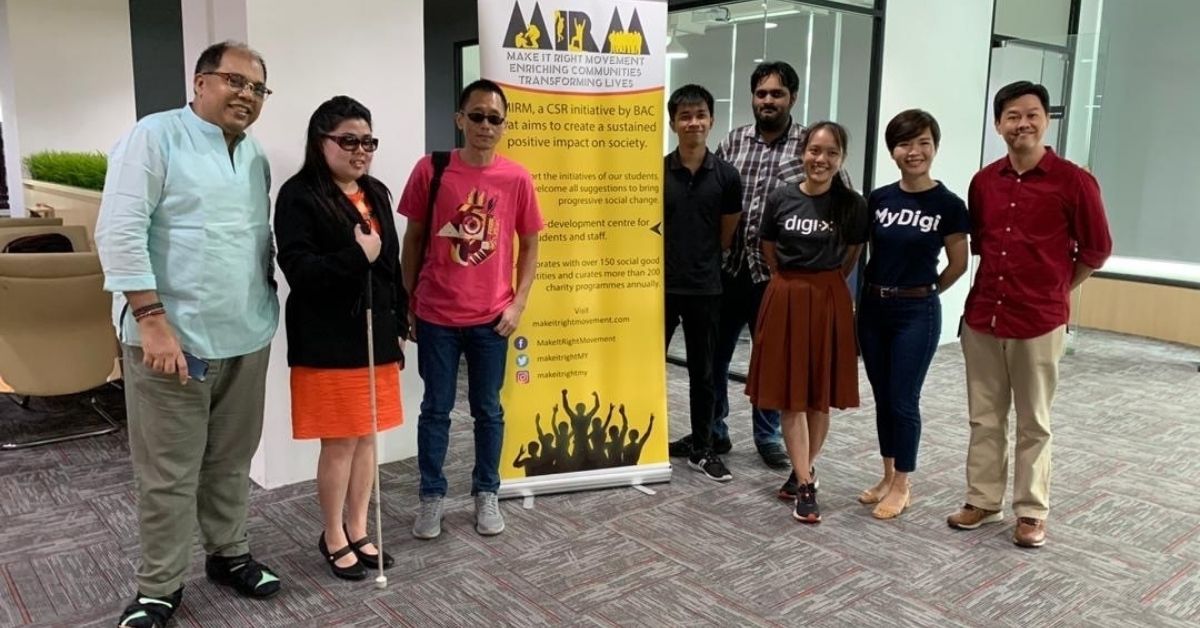When the word accessibility is mentioned in the context of technology, most of our minds go straight to whether or not someone has the right device and the internet connection for it to work.
Now, we’re focused on making technology a lot more accessible in that sense to those in rural areas. However, a still-underserved community when it comes to technology accessibility would be persons with disabilities (PWDs).
Seeing as today is the International Day of PWDs, Digi shared something special, particularly for the visually impaired community.
They introduced their revamped website and MyDigi app that comes with improved accessibility features as part of their Yellow Hearts CSR initiative.
They’ve also released an Inclusive Digital Touchpoints Playbook to inspire other like-minded organisations to quickly build accessible digital platforms that’ll benefit more PWDs across the country. The Playbook contains Digi’s research and feedback from the PWD community itself.
It will be released by 2 local social enterprises who work closely with the visually impaired community, Dialogue in the Dark (DID) and Make It Right Movement (MIRM).
“Inclusive digital touchpoints can provide PWDs the independence and tools to perform simple everyday tasks that the rest of us take for granted,” said Brian Lariche, CEO of MIRM.
How It Works
For the accessibility upgrades, they followed the international standards for accessibility. Their improvements will address 4 challenges associated to visual impairment: blindness, low vision, colour blindness, dyslexia.
Screen readers have come a long way, but the technology is still unable to work around some common website designs. So, some of the ways that Digi is improving accessibility on its site are:
- Providing descriptive captions and alternative texts, which allow people to visualise images when unable to view them.
- Having readable fonts with no text embedded on images, which allow efficient reading and better understanding.
- Avoiding Italics and stylised fonts, which improves accessibility for dyslexic readers and enables screen readers to voice out words effectively.
- Having high contrast content, icons and buttons for users with low vision.
- Avoiding content that flashes more than 3 times in any 1 second period so that users with photosensitive epilepsy aren’t affected.
- Migrating from traditional image-driven CAPTCHA to scanned text with an audio alternative.
These improvements are being built into Digi’s website and app and the team will ensure compatibility with screen readers, audio and video transcribers used by PWDs.
Upgrades will be continuous as they take in suggestions on how to improve accessibility features along the way, so that they can accommodate PWDs besides the visually impaired.

The Stats Behind The Decision
Digi reported in their press release that 1.2.% or 400k Malaysians have bilateral blindness (visual impairment in both eyes)
4-8% of school-going children have dyslexia and 7% of Malaysians who are senior citizens have visual impairments due to aging.
They concluded that this decision makes business sense because 71% of web visitors who experience inaccessibility will leave without complaining or giving feedback.
Hence, they wanted to create a better user experience for visually impaired people on their site and app.
“The world runs on the Internet, a fact that has become even more pronounced during this pandemic. This season has similarly highlighted the disparity between those who have and are less likely to have easy access to online experiences,” said Philip Ling, Digi’s Head of Sustainability.
“We strongly believe that inclusion is a basic human right and are therefore taking action to lower the barriers of access to our digital touchpoints.”
“This has the potential to empower fellow Malaysians with impairments with a sense of independence to run their own errands, and to connect them to more socio-economic opportunities.”
Philip Ling, Digi’s Head of Sustainability
- You can read more about Digi’s Yellow Heart initiative here.
- You can read our previous coverage on another Digi initiative for the visually impaired here.
Featured Image Credit: Digi Telecommunications Sdn Bhd









